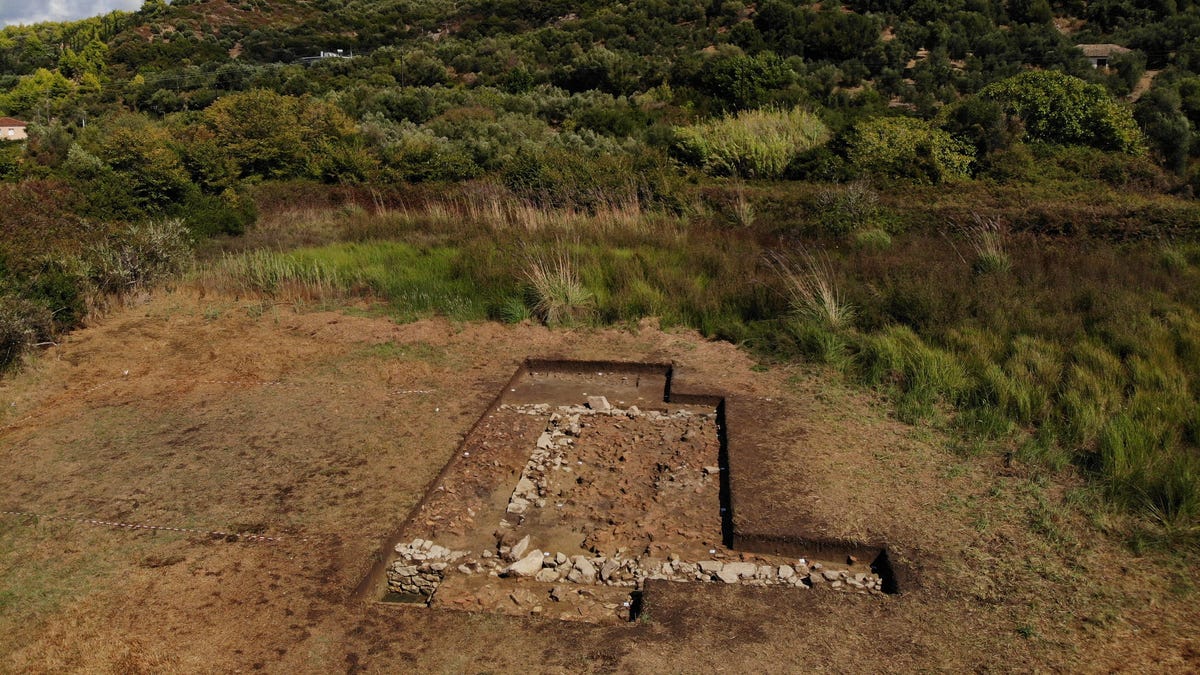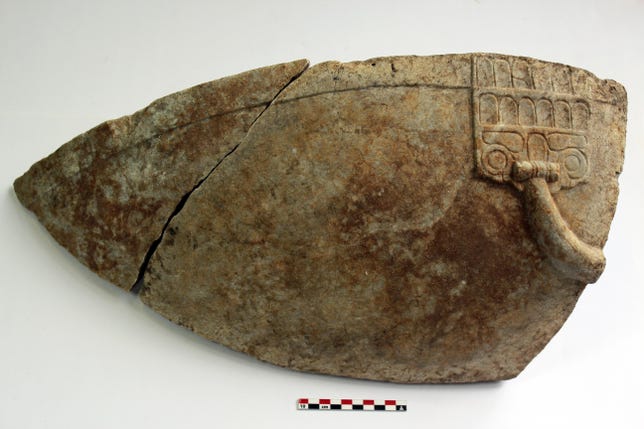
Excavation and study is still in the early phases for this shrine, which might have been a temple of Poseidon.
Birgitta Eder/Athens Branch of the Austrian Archaeological Institute
Paging Percy Jackson. Years of history hid a temple in the Peloponnese region of southern Greece. Archeologists are now excavating and studying it, and it may not be just any old ancient shrine. It may be a long lost temple of Poseidon, the mythological god of the sea.
Greek historian and geographer Strabo, who lived 2,000 years ago, wrote of a notable shrine to Poseidon in the area where researchers found the temple. In a statement on Wednesday, Mainz University in Germany said a team of researchers “unearthed the remains of an early temple-like structure that was located within the Poseidon sanctuary site and was quite possibly dedicated to the deity himself.”
The structure is located in a coastal area that was once home to an ancient settlement. Scientists have been studying its history of sea level and coastal changes, uncovering a tale of multiple tsunami events over a large span of time. Traces of the structure first came to light in late 2021. Excavation work turned up the hidden temple.

 Enlarge Image
Enlarge Image
Part of a marble ritual water basin helped to confirm the age of the possible Poseidon shrine site found in Greece.
Birgitta Eder/Athens Branch of the Austrian Archaeological Institute
“The location of this uncovered sacred site matches the details provided by Strabo in his writings,” said archeologist Birgitta Eder of the Austrian Archaeological Institute.
The area’s history of extreme wave events may tie into its significance as a place of worship. “It seems possible that this location may have actually been explicitly selected for the site of the Poseidon temple because of these extreme occurrences,” Mainz University said. “After all, Poseidon, with his cult title of Earthshaker, was considered by the ancients to be responsible for earthquakes and tsunamis.”
Confirming the shrine as the lost temple of Poseidon could take time. Researchers have embarked on a multi-year investigation of the structure, which measures in at about 31 feet (9.4 meters) wide. At least one intriguing item has already been found: part of a marble perirrhanterion, a ritual water basin.
We’ll have to stay tuned to see what else comes to light as work continues at the site.
